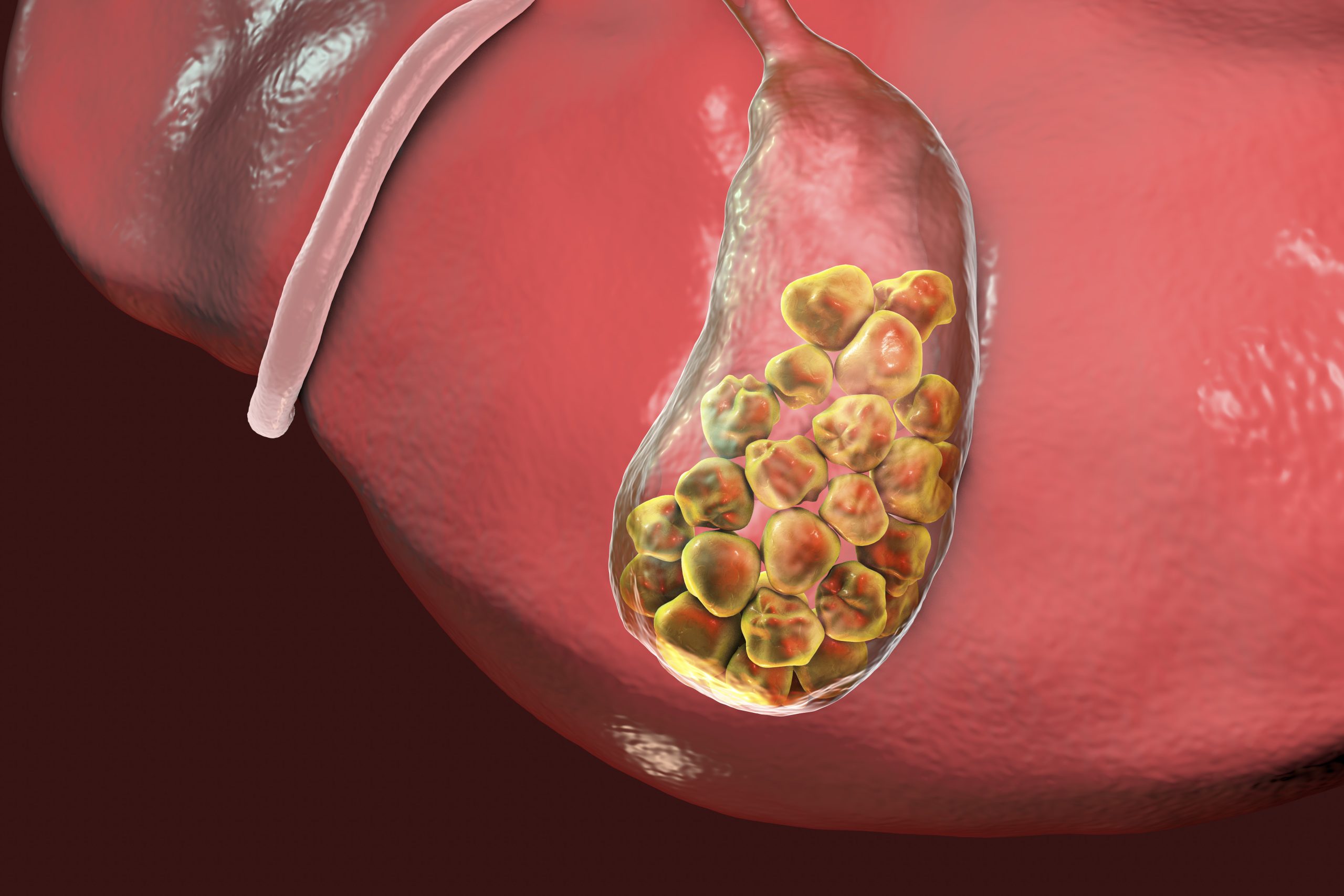La colecisti (o cistifellea) è un organo piuttosto piccolo, posto appena al di sotto del fegato che ha il compito di immagazzinare e concentrare la bile, che contiene un derivato del colesterolo, la colesterina. Questo derivato rimane in sospensione nella bile grazie all’azione dei sali biliari, prodotti anch’essi dal fegato e contenuti nelle bile stessa.
Calcoli alla colecisti: cosa sono e perché si formano
Quando la composizione dei sali biliari è alterata o quando la bile contiene troppa colesterina, quest’ultima precipita sotto forma di cristalli producendo pietruzze nerastre che chiamiamo calcoli. Le dimensioni dei calcoli della colecisti possono raggiungere i 6 centimetri oppure rimanere di pochi millimetri.
I calcoli sono una patologia piuttosto fastidiosa, dolorosa e molto frequente soprattutto dai 40-50 anni, con prevalenza nelle donne, più a rischio durante gravidanza, allattamento e in presenza di disturbi ormonali e obesità.
Calcoli alla colecisti: come accorgersene
I calcoli possono rimanere asintomatici per anni, senza cioè dare disturbi. Spesso, sono un riscontro occasionale nel corso di un’ecografia addominale effettuata per altri motivi.
Quando sintomatici, i calcoli possono determinare coliche biliari, dolori localizzati alla bocca dello stomaco o nella parte alta (di destra) dell’addome con irradiazione posteriore alla punta della scapola, associati o meno a nausea e vomito.
Cattiva digestione, lingua amara, inspiegabile cattivo sapore in bocca, senso di peso allo stomaco sono alcuni sintomi collegati alla calcolosi a cui spesso non diamo importanza, dando la colpa a un pasto eccessivo o al consumo esagerato di un particolare cibo.
Calcoli alla colecisti: i rischi
La tanto temuta colica è causata dal tentativo della colecisti di espellere la bile, contrastato da uno o più calcoli che fungono da “tappo” nel dotto cistico.
La contrazione spastica della colecisti genera il dolore. Trascurare la tendenza a soffrire di calcoli può portare a una colecistite (infezione dell’organo), a una pancreatite (flogosi del pancreas, l’organo più vicino alla colecisti) e in rari casi, in particolare negli anziani, ad una colangite (un’infezione dei dotti biliari causata solitamente da batteri se il dotto biliare è già parzialmente ostruito da calcoli biliari).
Un’altra complicanza è rappresentata dall’ittero, che si manifesta con il colore giallastro della pelle, dovuto al passaggio dei calcoli dalla colecisti nel coledoco, cioè in quel dotto che unisce il fegato e la colecisti all’intestino.
Calcoli alla colecisti: cure e prevenzione
Per evitare di giungere alle gravi complicanze descritte, il fattore tempo è essenziale, solo un gastroenterologo o un chirurgo esperto possono riconoscere eventuali campanelli d’allarme.
La calcolosi della colecisti va sempre operata salvo gravi comorbidità del paziente.
Calcoli alla colecisti: quando operare…e come
In questi casi, l’operazione è risolutiva ed evita il rischio di dover intervenire d’urgenza in presenza delle complicanze descritte in precedenza.
Da molti anni, l’intervento di colecistectomia è effettuato con tecnica laparoscopica mininvasiva, attraverso piccole incisioni da cui vengono fatti passare gli strumenti che consentono l’asportazione dell’organo malato. Il decorso post operatorio è rapido, la dimissione avviene entro 24-48 ore e la ripresa delle proprie attività entro una settimana.
Conclusioni
La colecisti è un organo non vitale nell’adulto, perciò nell’arco di qualche mese il nostro corpo si abituerà a farne a meno (come avviene per l’appendice e la milza).
All’inizio sarà fondamentale evitare cibi ricchi di lipidi perché la loro digestione sarà per un certo periodo di tempo rallentata e più difficoltosa. Gli alimenti da evitare sono ovviamente tutti i condimenti, gli insaccati ed i salumi ricchi di grasso, i formaggi (tutti), le uova.
Dopo un paio di settimane, in base alle proprie sensazioni, si può reintrodurre con moderazione questi alimenti nella dieta, e normalmente dopo 1-2 mesi si può tranquillamente riprendere l’alimentazione abituale.
La Redazione in collaborazione con il Dr. Mattia Pizzi – Chirurgo generale, Proctologo, Gastroenterologo
SI PREGA DI INDICARE IL PROPRIO NOME E QUELLO DEL DESTINARIO DELLA RICHIESTA.
Le richieste saranno inoltrate al medico o professionista sanitario il quale risponderà direttamente. DossierSalute.com non è responsabile di tardive o mancate risposte.






